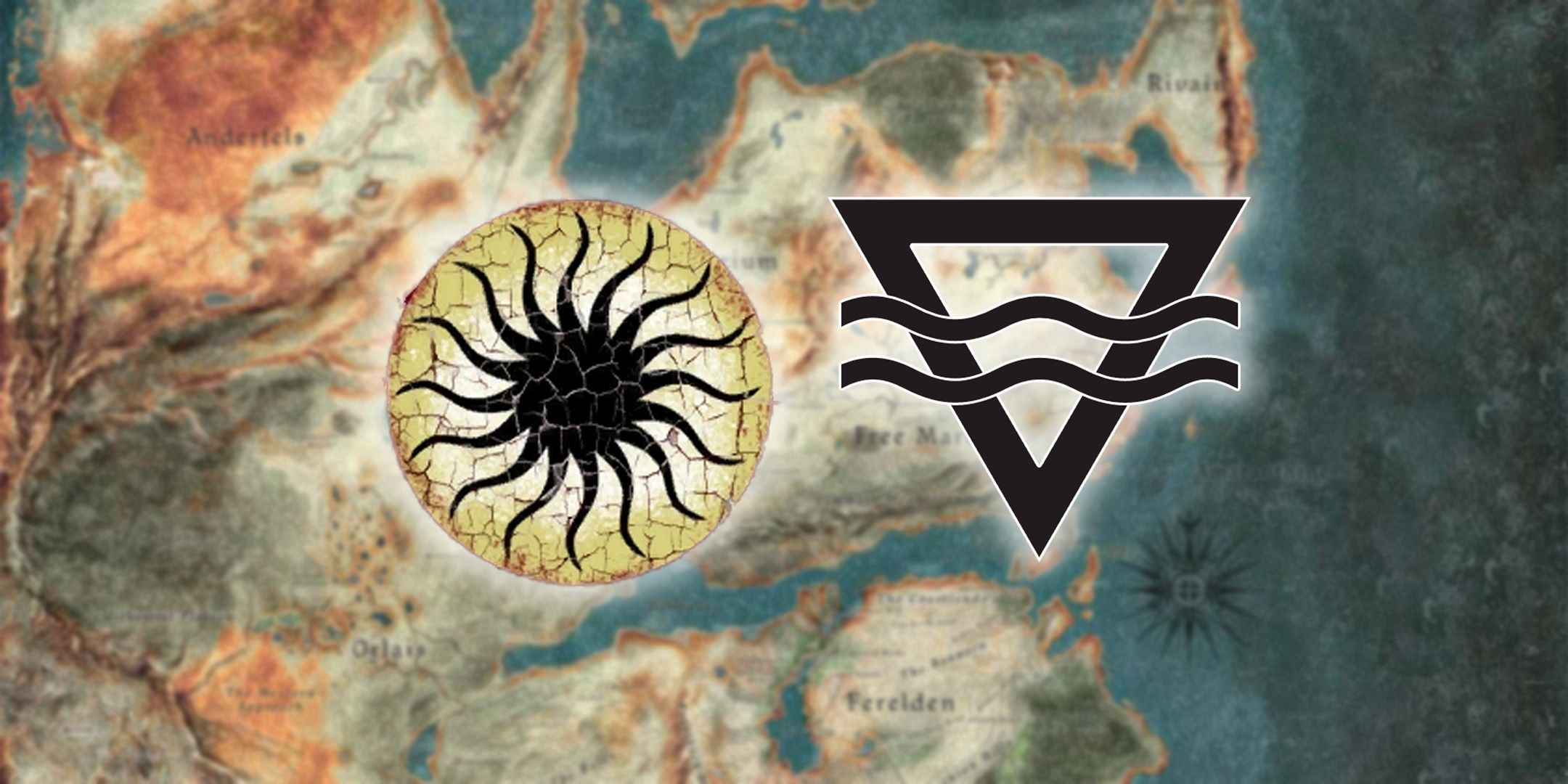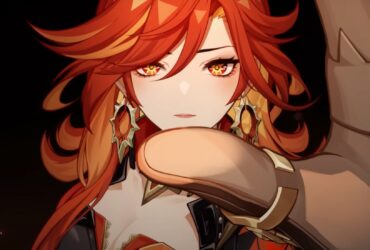Please note: This article references new and important lore reveals for Dragon Age: The Veilguard. Spoilers ahead.
The Magisters Sidereal remain one of the most important groups in all of Dragon Age history, even among recent events in Thedas. Dragon Age: The Veilguard shines some new light on their actions, while also setting it up to play an equally important role in the future. The lore surrounding the Magisters Sidereal grows ever so slightly from game to game, but there’s reason to believe they could play a huge role in the future – as of Dragon Age: The Veilguard anyway.
The Magisters Sidereal, seven or eight ancient Magisters of the Tevinter Imperium, are the ones who crossed The Veil into the Fade, beginning the Blight with their actions. For so long, fans have believed (though many doubted) that they did so for the Old Gods, but that’s only partially true. Dragon Age: The Veilguard confirms that the Old Gods were the Evanuris all along, and while that alone shakes up the lore considerably, Dragon Age: The Veilguard‘s secret ending also depicts their ritual to enter The Golden City. Because of that, it seems possible they’ll play a bigger role in future games – and it’s important to know what became of them.

Related
Where Each Dragon Age Protagonist is After The Veilguard
Although there were not as many moving pieces as past games, it’s worth looking at where each Dragon Age protagonist could be post-Veilguard.
The Magisters Sidereal: Who They Were and Where They Are Now
Traditionally, there are believed to be 7 Old Gods worshipped by Tevinter: Dumat, Zazikel, Toth, Andoral, Urthemiel, Lusacan, and Razikale. The Magisters Sidereal were a collection of high priests of these gods, who believed said gods called to them to enter The Golden City and obtain godhood. The seven known members of The Magisters Sidereal include the following:
- The Conductor of the Choir of Silence (Dumat)
- Architect of the Works of Beauty (Urthemiel)
- The Watchman of Night (Lusacan)
- The Forgewright of Fire (Toth)
- The Appraise of Slavery (Andoral)
- The Augur of Mystery (Razikale)
- The Madman of Chaos (Zazikel)
To date, fans have only seen two of the Magisters Sidereal in the Dragon Age franchise. The first was The Architect, who was introduced in Dragon Age: Origins‘ Awakening DLC, where he sought to free his Darkspawn brothers from the Blight’s song. The second was Corypheus, first introduced in Dragon Age 2 before becoming the primary antagonist of Dragon Age: Inquisition. These two and the other Magisters Sidereal entering The Golden City supposedly turn it Black, and when the Magisters Sidereal returned, they brought the Taint with them. This caused the events of the First Blight and all the Blights that would follow.
The Evanuris and the Magisters Sidereal
However, there are a few things surrounding these events and their identities/fates to consider. First, Dragon Age: The Veilguard confirms that the old fan theory that the Old Gods and the Evanuris are one and the same is essentially true. The Archdemons were thralls to their perspective gods, with Lusacan belonging to Elgar’nan and Razikale belonging to Ghilan’nain. Solas never took a high dragon thrall. Through these Thralls, it was the Evanuris who tried to lure the Magisters Sidereal to their Fade Prison, unleashing a little of the imprisoned Blight upon Thedas. This means that the death of the Archdemons could be why only Elgar’nan and Ghilan’nain are active come Dragon Age: The Veilguard, likely meaning the Evanuris minus Mythal and Solas are dead (since the Archdemons granted them immortality) or otherwise severely weakened.
Most of the Magisters Sidereal Are Surrounded in Mystery
When the Magisters Sidereal returned from The Golden City, it is said they were confronted by the Then-Archon of Minrathous, who with their power scattered the Magisters across Thedas. Players have directly encountered and influenced the fate of two:
- The Architect could be dead or alive, depending on the choices of the Warden-Commander (who might also be the Hero of Ferelden). If The Architect is alive, then it is potentially working with a tangent of Wardens to help prevent future Blights. Of course, the double Blight of Dragon Age: The Veilguard might put his work to an end—might being the key word.
- Corypheus is defeated at the end of Dragon Age: Inquisition, implied to be killed by The Inquisitor’s Anchor. However, it is possible that Corypheus was sealed away in The Fade – possibly opening his eventual return.
These two are quantum characters for Dragon Age, although the fate of Corypheus seems more set. Of the other five known Magisters Sidereal, the only thing known comes from a Dragon Age: Inquisition codex. According to it, the dwarves encountered three figures matching the description of the Blighted Magisters Sidereal. The Dwarves saw the Magisters turn upon one of them, killing and consuming it. Who it is and how legit this is remains unknown, but as it stands, Corypheus and The Architect are quantum characters, one Magister may be dead, and at least four are completely surrounded in mystery.

Related
Dragon Age Theory: Thedas is Tranquil
Although there are plenty of hard-to-fill holes in my theory, I am convinced that the Dragon Age setting of Thedas is Tranquil.
The Eighth Magister
It is also possible that an Eighth member of the Magisters Sidereal existed, though they would be stricken from all known record. Specifically, a Dragon Age: Inquisition codex regarding a constellation suggests that there could have been another Old God and Magister because a generalized serpentine dragon is an odd constellation for Tevinter. Both this and the Dwarven codex could be laying the groundwork for future entries, or because of their speculative nature, it could be that they are doors that remained closed. However, it should be said that the constellation perhaps depicts a sea creature, possibly tying this eighth member to Dragon Age‘s Executors.
Dragon Age: The Veilguard’s Secret Ending Highlights Five Magisters
Whether the true number is 7 or 8, the most interesting part is the emphasis placed on five Magisters. Artistic depictions of the Magisters Sidereal’s ritual seemingly depict five of the Magisters instead of all 7 or 8, including the recent secret ending of Dragon Age: The Veilguard. One of its slides seems to depict five of the Magisters Sidereal as they attempt the ritual, with the Executor saying, “At last. We have balanced.” Interestingly, while the other slides show the Executors manipulating events, this one doesn’t. Perhaps it is the absence thereof suggesting two of the Magisters were actually Executors or perhaps this is the event that set the Executors’ plans into action. Either way, with Executors set up to be the next big bad of the franchise, this would suggest that the Magisters Sidereal and their actions could perhaps still be involved.
While Awakened Darkspawn or the Magisters Sidereal are arguably some of the most interesting lore in Dragon Age, the franchise hasn’t delved deep into their actions outside its obvious repercussions (the Blight), Dragon Age: Origins‘ Awakening DLC, and Corypheus himself of course. With the Blight seemingly changing in Dragon Age: The Veilguard, it seems possible that more of their ritual, the Magisters Sidereal themselves, the Fade-imprisoned Blight, and the Executors’ role in everything are set for big things for the next Dragon Age game.















Leave a Reply